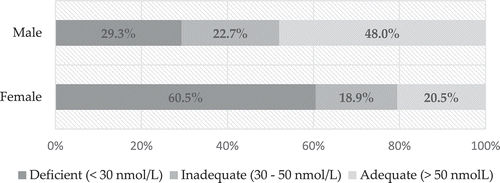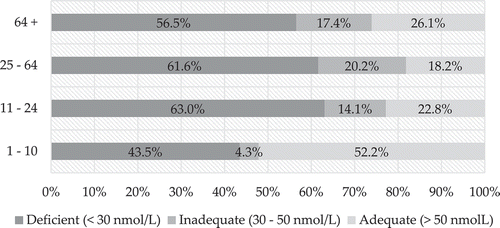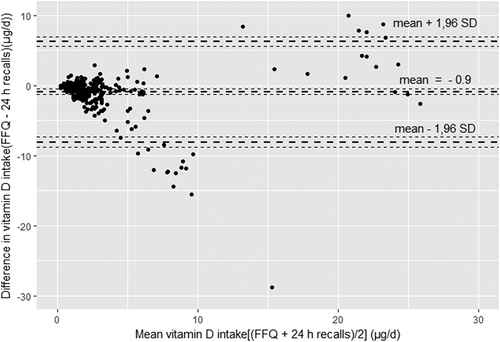Figures & data
Figure 1. Distribution of participants according to the 25(OH)D cut-off levels by gender (chi-square test was used for comparison between gender and vitamin D status categories).

Figure 2. Percentage distribution of female participants according to 25(OH)D level and age groups (chi-square test was used for comparison between age groups and vitamin D status categories).

Table 1. Anthropometric measurements of study participants (n = 316).
Table 2. Daily energy and nutrient intake assessed by the average of the repeated 24 HDR and LW-FFQ with correlations between the estimates by applying questionnaires among Libyan women.
Figure 3. Bland-Altman plot assessing the agreement between the LW-FFQ and the average of repeated 24 HDRs for estimation of vitamin D intake.

Table 3. Cross-classification of vitamin D intake into quartiles by LW -FFQ and validation methods (24 HDR and status).
Table 4. Estimated vitamin D status (25(OH)D nmol/L) and vitamin D intake estimated by 24 HDR by quartile of vitamin D intake estimated by LW-FFQ among Libyan women (n = 40).
Table 5. Daily intake of food groups and their contribution to total Vitamin D intake among Libyan women (n = 316).
Table 6. Major vitamin D food sources assessed by 24 h recall.
